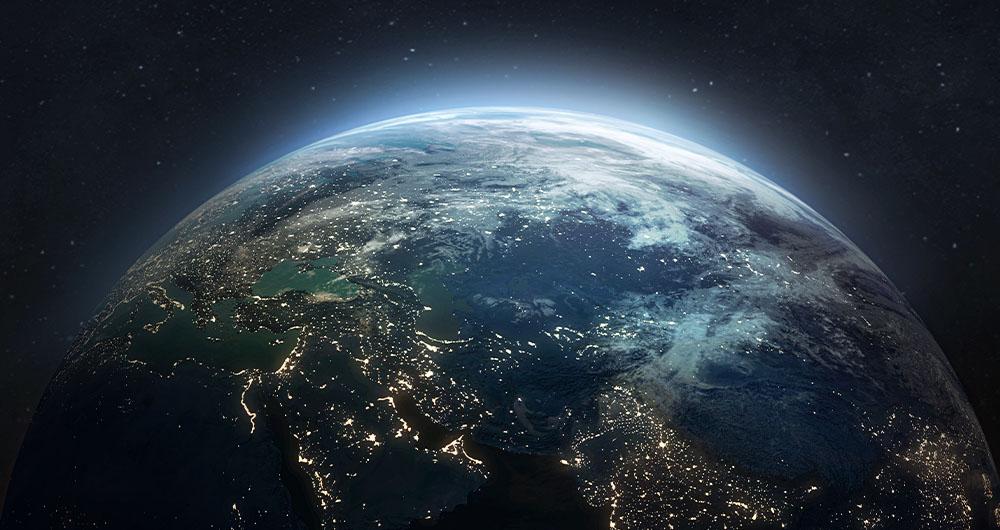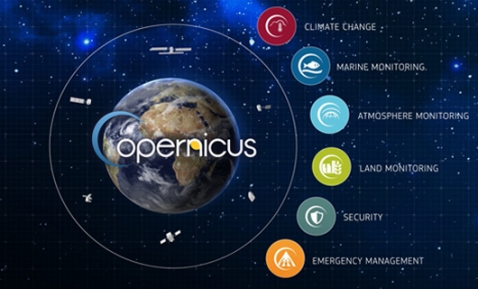
Today's climate crisis and environmental challenges demand innovative and effective responses. In this context, the European Commission's Destination Earth (DestinE) initiative is a pioneering project that aims to develop a highly accurate digital model of our planet.
Through this digital twin of the Earth it will be possible to monitor and prevent potential natural disasters, adapt sustainability strategies and coordinate humanitarian efforts, among other functions. In this post, we analyse what the project consists of and the state of development of the project.
Features and components of Destination Earth
Aligned with the European Green Pact and the Digital Europe Strategy, Destination Earth integrates digital modeling and climate science to provide a tool that is useful in addressing environmental challenges. To this end, it has a focus on accuracy, local detail and speed of access to information.
In general, the tool allows:
- Monitor and simulate Earth system developments, including land, sea, atmosphere and biosphere, as well as human interventions.
- To anticipate environmental disasters and socio-economic crises, thus enabling the safeguarding of lives and the prevention of significant economic downturns.
- Generate and test scenarios that promote more sustainable development in the future.
To do this, DestinE is subdivided into three main components :
- Data lake:
- What is it? A centralised repository to store data from a variety of sources, such as the European Space Agency (ESA), EUMETSAT and Copernicus, as well as from the new digital twins.
- What does it provide? This infrastructure enables the discovery and access to data, as well as the processing of large volumes of information in the cloud.
·The DestinE Platform:.
- What is it? A digital ecosystem that integrates services, data-driven decision-making tools and an open, flexible and secure cloud computing infrastructure.
- What does it provide? Users have access to thematic information, models, simulations, forecasts and visualisations that will facilitate a deeper understanding of the Earth system.
- Digital cufflinks and engineering:
- What are they? There are several digital replicas covering different aspects of the Earth system. The first two are already developed, one on climate change adaptation and the other on extreme weather events.
- WHAT DOES IT PROVIDE? These twins offer multi-decadal simulations (temperature variation) and high-resolution forecasts.
Discover the services and contribute to improve DestinE
The DestinE platform offers a collection of applications and use cases developed within the framework of the initiative, for example:
- Digital twin of tourism (Beta): it allows to review and anticipate the viability of tourism activities according to the environmental and meteorological conditions of its territory.
- VizLab: offers an intuitive graphical user interface and advanced 3D rendering technologies to provide a storytelling experience by making complex datasets accessible and understandable to a wide audience..
- miniDEA: is an interactive and easy-to-use DEA-based web visualisation app for previewing DestinE data.
- GeoAI: is a geospatial AI platform for Earth observation use cases.
- Global Fish Tracking System (GFTS): is a project to help obtain accurate information on fish stocks in order to develop evidence-based conservation policies.
- More resilient urban planning: is a solution that provides a heat stress index that allows urban planners to understand best practices for adapting to extreme temperatures in urban environments..
- Danube Delta Water Reserve Monitoring: is a comprehensive and accurate analysis based on the DestinE data lake to inform conservation efforts in the Danube Delta, one of the most biodiverse regions in Europe.
Since October this year, the DestinE platform has been accepting registrations, a possibility that allows you to explore the full potential of the tool and access exclusive resources. This option serves to record feedback and improve the project system.
To become a user and be able to generate services, you must follow these steps..
Project roadmap:
The European Union sets out a series of time-bound milestones that will mark the development of the initiative:
- 2022 - Official launch of the project.
- 2023 - Start of development of the main components.
- 2024 - Development of all system components. Implementation of the DestinE platform and data lake. Demonstration.
- 2026 - Enhancement of the DestinE system, integration of additional digital twins and related services.
- 2030 - Full digital replica of the Earth.
Destination Earth not only represents a technological breakthrough, but is also a powerful tool for sustainability and resilience in the face of climate challenges. By providing accurate and accessible data, DestinE enables data-driven decision-making and the creation of effective adaptation and mitigation strategies.


